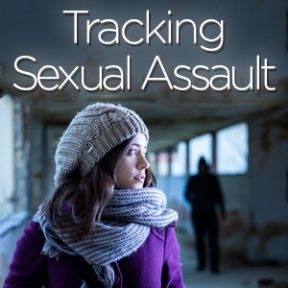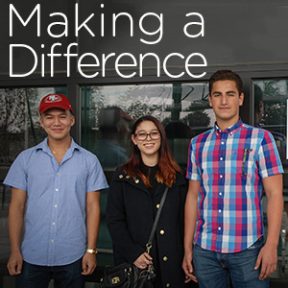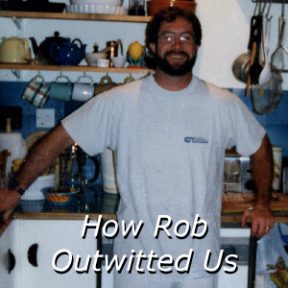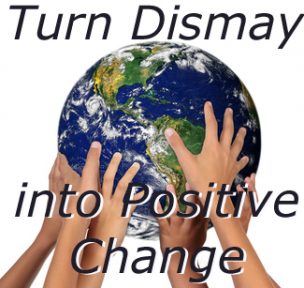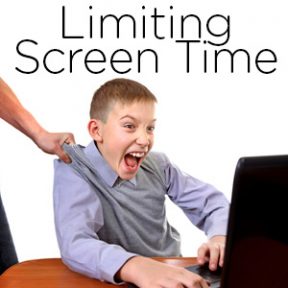 Did you know that nearly half of all sexual assaults take place during the first few weeks of the school year and that freshmen girls are the most vulnerable? What an awful way to start college.
Twenty percent of women and 7.5 percent of men report being sexually assaulted while in college. The perpetrators consist of just 10% of the male population and each of these perps commit these crimes about 6 times. So statistically speaking, if we stop these repeat offenders, we could stop 60% of the sexual assaults on campus. Wow.
The good news is that Jess Ladd, a sexual assault survivor at Pomona College, created an online sexual assault tracker called Callisto to help students report rape and other sexual assaults on college campuses. Her organization, Sexual Health Innovations, gives victims 3 ways to report these heinous attacks: (1) report a sexual assault; (2) record a report and save for later; or (3) report the crime only if other people accuse the same person. These reports are encrypted until they are shared with the college administrator who handles these cases.
Callisto is being used on several campuses: Pomona College, Univ of San Francisco, Coe College, and Central College. Later this year, Callisto will also be available in Colorado, New York and other states. By making the reporting process somewhat easier and less invasive, more victims will come forward. By removing repeat offenders from college campuses, Callisto will substantially reduce sexual assaults, and general awareness of Callisto will probably deter first-time offenders. I hope to see Callisto on every school and college campus.
[Source]
Did you know that nearly half of all sexual assaults take place during the first few weeks of the school year and that freshmen girls are the most vulnerable? What an awful way to start college.
Twenty percent of women and 7.5 percent of men report being sexually assaulted while in college. The perpetrators consist of just 10% of the male population and each of these perps commit these crimes about 6 times. So statistically speaking, if we stop these repeat offenders, we could stop 60% of the sexual assaults on campus. Wow.
The good news is that Jess Ladd, a sexual assault survivor at Pomona College, created an online sexual assault tracker called Callisto to help students report rape and other sexual assaults on college campuses. Her organization, Sexual Health Innovations, gives victims 3 ways to report these heinous attacks: (1) report a sexual assault; (2) record a report and save for later; or (3) report the crime only if other people accuse the same person. These reports are encrypted until they are shared with the college administrator who handles these cases.
Callisto is being used on several campuses: Pomona College, Univ of San Francisco, Coe College, and Central College. Later this year, Callisto will also be available in Colorado, New York and other states. By making the reporting process somewhat easier and less invasive, more victims will come forward. By removing repeat offenders from college campuses, Callisto will substantially reduce sexual assaults, and general awareness of Callisto will probably deter first-time offenders. I hope to see Callisto on every school and college campus.
[Source]
 Did you know that nearly half of all sexual assaults take place during the first few weeks of the school year and that freshmen girls are the most vulnerable? What an awful way to start college.
Twenty percent of women and 7.5 percent of men report being sexually assaulted while in college. The perpetrators consist of just 10% of the male population and each of these perps commit these crimes about 6 times. So statistically speaking, if we stop these repeat offenders, we could stop 60% of the sexual assaults on campus. Wow.
The good news is that Jess Ladd, a sexual assault survivor at Pomona College, created an online sexual assault tracker called Callisto to help students report rape and other sexual assaults on college campuses. Her organization, Sexual Health Innovations, gives victims 3 ways to report these heinous attacks: (1) report a sexual assault; (2) record a report and save for later; or (3) report the crime only if other people accuse the same person. These reports are encrypted until they are shared with the college administrator who handles these cases.
Callisto is being used on several campuses: Pomona College, Univ of San Francisco, Coe College, and Central College. Later this year, Callisto will also be available in Colorado, New York and other states. By making the reporting process somewhat easier and less invasive, more victims will come forward. By removing repeat offenders from college campuses, Callisto will substantially reduce sexual assaults, and general awareness of Callisto will probably deter first-time offenders. I hope to see Callisto on every school and college campus.
[Source]
Did you know that nearly half of all sexual assaults take place during the first few weeks of the school year and that freshmen girls are the most vulnerable? What an awful way to start college.
Twenty percent of women and 7.5 percent of men report being sexually assaulted while in college. The perpetrators consist of just 10% of the male population and each of these perps commit these crimes about 6 times. So statistically speaking, if we stop these repeat offenders, we could stop 60% of the sexual assaults on campus. Wow.
The good news is that Jess Ladd, a sexual assault survivor at Pomona College, created an online sexual assault tracker called Callisto to help students report rape and other sexual assaults on college campuses. Her organization, Sexual Health Innovations, gives victims 3 ways to report these heinous attacks: (1) report a sexual assault; (2) record a report and save for later; or (3) report the crime only if other people accuse the same person. These reports are encrypted until they are shared with the college administrator who handles these cases.
Callisto is being used on several campuses: Pomona College, Univ of San Francisco, Coe College, and Central College. Later this year, Callisto will also be available in Colorado, New York and other states. By making the reporting process somewhat easier and less invasive, more victims will come forward. By removing repeat offenders from college campuses, Callisto will substantially reduce sexual assaults, and general awareness of Callisto will probably deter first-time offenders. I hope to see Callisto on every school and college campus.
[Source]
![]() It’s frustrating that no matter what companies say about their “privacy” policies, they all seem to be guilty of using our personal data for their benefit.
It’s frustrating that no matter what companies say about their “privacy” policies, they all seem to be guilty of using our personal data for their benefit.
Well, Google just alerted customers to the invasive changes by calling them “some new features for your Google account.” Wow, really?
So what is Google doing? According to ProPublica, Google’s privacy policy combines personally identifiable information from your YouTube searches, and Google searches with DoubleClick ad data from the web.
The good news: You can opt out of Google’s tracking system!
Here’s how:
1. Go to “My Account” in your Google account page
2. Click on “My Activity”
3. Click on the 3 vertical dots next in the top blue bar of your screen
4. Click “Activity Controls”
5. Untick “Include Chrome browsing history and activity from websites and apps that use Google services
 There’s nothing better for lifting your spirits than to spend the day with brilliant students who are on a mission to solve arguably the world’s biggest problem: climate change.
There’s nothing better for lifting your spirits than to spend the day with brilliant students who are on a mission to solve arguably the world’s biggest problem: climate change.
The Kids 4 Hydrogen team toured 3 labs in Silicon Valley to select the best lab to build their Smart Plugs and hydrogen production equipment. Yup, they’re starting the process to get the job done. They’re working with Dr. Roy McAlister who has invented a spark plug that will convert an internal combustion engine (ICE or gasoline-powered vehicle) to be a flex fuel engine that runs on Metrol, liquid hydrogen (with nitrogen), or gasoline. It’s what the students claim is the best, and only, solution that they’ve found that we can implement now to reduce CO2 and our planet’s warming within 10 years — before it’s too late.
So what will Kids 4 Hydrogen do?
The kids plan to make a prototype of Dr. McAlister’s Smart Plug. Their goal is to demonstrate to the world that our ONE BILLION ICE cars on the road today can be converted to use Metrol to completely stop ALL CO2 from being emitted from every car’s tailpipe. They know that in 10 years that there will not be enough electric or hydrogen fuel cell cars on the road to reduce any significant amount of emissions because hundreds of millions of ICE cars will continue to spew CO2 into the atmosphere. Kids are beautiful because they aren’t bought out by big oil companies and they can see the easiest and cleanest solutions as a result.
How can you help?
Help fund their prototype and sign up to convert your car. They’ll soon have their updated website with information on how to get on a wait list. This is something you can do. It costs nothing to get on the wait list and you’ll be privy to the latest developments. Check out www.Kids4Hydrogen.org.

 My first encounter with Generation Adderall was with one of my students. She had trouble getting her work done for weeks, and then all of a sudden, she walked into my office with a pile of crumpled papers and told me that she finished all of her late work. After she spent about 5 minutes lying to me about how she just sat down and decided to just do the work, she finally confessed that one of her friends gave her some Adderall – and that it changed her life.
My first encounter with Generation Adderall was with one of my students. She had trouble getting her work done for weeks, and then all of a sudden, she walked into my office with a pile of crumpled papers and told me that she finished all of her late work. After she spent about 5 minutes lying to me about how she just sat down and decided to just do the work, she finally confessed that one of her friends gave her some Adderall – and that it changed her life.
Since then, I cringe when I read about how Adderall is the go-to drug of choice for millennials who are looking to increase their productivity at the office (or in class) and again to party all night. So what’s wrong with Adderall? It’s a drug that is being sold as an off-label stimulant on college campuses. In 2002, 16 million prescriptions were written for Adderall and 116,000 users ended up in rehab to kick the habit.
Rather than use illicit drugs like Adderall to help with focus, energy, and alertness, there are 5 all-natural alternatives. According to Dr. Ehsan Ali, a concierge doctor in Beverly Hills, these alternatives can work.
Focus: Protein
Protein in capsule, powder, or tofu scramble (500 mg/day)
Creative Stimulation: Cacao
Raw cacao (2 TBSP/day)
Brain Health: Omega-3 Fatty Acids
Fish, chia seeds, walnuts (or supplements) (2,500 mg/day)
Reduce Implusiveness: Zinc
Spinach, beef, shrimp, or kidney beans (or supplements) (20 mg/day)
Calming: Magnesium
Magnesium supplement
Let me know if any of these alternatives to Adderall work for you. I take protein, cacao, and Omega-3s every day and I feel great.
[Source]
 I grew up during the ‘60s when Women’s Lib and feminism rocked the world of the likes of Mrs. Cleaver (Leave it to Beaver – sitcom about the traditional all-American family). The dad went to work and earned the bacon while mom tended to the children, cooking, and laundry. So when we took a 6-week trip to Europe and stayed in 3-consecutive home exchanges, I insisted that we all take turns doing daily chores. Simple things like turning on a washing machine was difficult and was often the source of much aggravation. So I delegated Rob to being the family launderer for the 6 weeks. Big mistake!
I grew up during the ‘60s when Women’s Lib and feminism rocked the world of the likes of Mrs. Cleaver (Leave it to Beaver – sitcom about the traditional all-American family). The dad went to work and earned the bacon while mom tended to the children, cooking, and laundry. So when we took a 6-week trip to Europe and stayed in 3-consecutive home exchanges, I insisted that we all take turns doing daily chores. Simple things like turning on a washing machine was difficult and was often the source of much aggravation. So I delegated Rob to being the family launderer for the 6 weeks. Big mistake!
Rob grumbled as he headed out the store to buy laundry detergent in a town south of London, and he did just about everything but kick the washer and dryer to get it to work. After he pulled out his first load of clothes from the dryer, Nicole and Jaclyn were horrified. All of our clothes had turned a grayish-green! We were in England so the instructions were written in English, hence, there was no reason Rob could have mixed up the detergent with something else. But he did. In one load of laundry, Rob managed to ruin all of our clothes that we’re supposed to wear for 6 weeks!
That is where I now realize, 20 years later, that Rob out witted us. Although he won’t admit this, I think he poured green dye into the washing machine to – YUP – get the reaction he got, so that I would tell him to never touch the laundry again! In hindsight, none of Rob’s clothes were ruined… He got us!
 I believe that every cloud has a silver lining – even today in the aftermath of the most contentious presidential election in recent history. While I am dismayed and humiliated by the mockery that has taken place over the past year, I hope we all hear the message from Americans loud and clear: Americans don’t trust the oligarchy (government controlled by corporations) that we call our government and that we are willing to accept a president who offers drastic change, even if it doesn’t represent our core values and beliefs. I like to stay in control. I work hard to create the little world that I live in. And when I feel that just about everything I had hoped for when this election cycle started now vanished, I’ve picked myself up – albeit slowly this morning – and I’m laying out plans to take care of business. We can’t wait for the new administration that will set us back and fumble around for the next 4 years.
I believe that every cloud has a silver lining – even today in the aftermath of the most contentious presidential election in recent history. While I am dismayed and humiliated by the mockery that has taken place over the past year, I hope we all hear the message from Americans loud and clear: Americans don’t trust the oligarchy (government controlled by corporations) that we call our government and that we are willing to accept a president who offers drastic change, even if it doesn’t represent our core values and beliefs. I like to stay in control. I work hard to create the little world that I live in. And when I feel that just about everything I had hoped for when this election cycle started now vanished, I’ve picked myself up – albeit slowly this morning – and I’m laying out plans to take care of business. We can’t wait for the new administration that will set us back and fumble around for the next 4 years.
What does that mean?
The biggest problem we face as a civilization is climate change. We need to reduce our CO2 levels by 60% by 2026 or our comfy lifestyles that we take for granted will be gone forever. The president-elect believes that climate change is a hoax invented by the Chinese, which means that we can’t rely on our government to find solutions. We are running out of time to find a clean energy system that can do the job.
Invest in Energy Solutions
If oil companies are holding out to sell their last barrels of oil and they’re calling natural gas “a clean alternative,” we need to move to real clean energy now without them. When my daughter Jaclyn was 15 years old, she took a class from Dr. Roy McAlister who invented the “Smart Plug,” a patented spark plug that converts your internal combustion engine so that it will use Metrol, liquid hydrogen (at room temperature). Today, the non-profit organization Kids 4 Hydrogen that she started in 2004, has an amazing team of teens who are carrying out her mission: Convert the ONE BILLION vehicles in the world to use hydrogen instead of gasoline. Hydrogen produces ZERO emissions. Check out their website: www.Kids4Hydrogen.org. They’ll be updating the website soon with information about how to sign up to convert your cars and where to get the fuel. Get on this list. This is something you can do.
Start reducing CO2 now
Rather than argue and debate about good energy solutions, we need to simply reduce CO2 emissions now. That means that everyone – no excuses – needs to reduce their driving by 10-20% per week. It doesn’t matter that you go to work on off hours or that you need your truck to carry big loads. Figure it out like your life depends on it, because it does! Join Logan’s movement to get everyone to reduce their driving by pledging to do so on his website: www.WhenNotIf.org. It’s easy and free. He’ll calculate how much CO2 you prevent from entering our atmosphere. You can do it. You need to do this. Now.
Turn your shock and dismay into positive action. You’ll feel better for it and you’ll be part of the solution. We can’t do anything about a Trump presidency/congress, but we can join the world in reducing CO2 and fossil fuel use. Support non-profit organizations to get this job done. We don’t have time to wait for another administration to set the course to save civilization as we know it. Remember, the earth will survive; it’s the living things that won’t.
 Good news for UC transfers!
Good news for UC transfers!
The application deadline has been moved from Nov 30th to Jan 3rd! Wow. UCs are trying to admit one transfer student for every two freshmen. So take your time to write killer essays!
This is also good news for students who are going the community college route. And the best part, you graduate from a UC no matter where you started!
 PSAT scores will be released on December 12th. You’ll receive good information about where your kids are strong and where they might need more support. Colleges don’t see the PSAT scores so not to worry if your kids didn’t do as well as you hoped.
PSAT scores will be released on December 12th. You’ll receive good information about where your kids are strong and where they might need more support. Colleges don’t see the PSAT scores so not to worry if your kids didn’t do as well as you hoped.
The good news is that they have time to develop those skills between now and when they take the real SAT or ACT.
Some more good news: The math portion of the new SAT will have less text-heavy questions because many students weren’t able to complete the math sections on the new test. Thank goodness!
Many states are using the SAT as their state’s accountability requirement, which parents prefer and as a result, students show up to take. I’m all for reducing the amount of days that students are required to take state-mandated tests because it gives them more time to be productive in the classroom.
 New guidelines by the American Academy of Pediatrics (AAP) can help parents make smarter choices about how much screen time their kids get each day. The old guidelines clumped types of screen time like entertainment and educational programming together just like they clumped ages of children together. So, this was a good step in the right direction. The AAP published an interactive online tool to personalize your family media use plan. It’s good for getting the conversation going about what activities are off limits at specific times of the day and in particular locations.
New guidelines by the American Academy of Pediatrics (AAP) can help parents make smarter choices about how much screen time their kids get each day. The old guidelines clumped types of screen time like entertainment and educational programming together just like they clumped ages of children together. So, this was a good step in the right direction. The AAP published an interactive online tool to personalize your family media use plan. It’s good for getting the conversation going about what activities are off limits at specific times of the day and in particular locations.
Use your good judgment and common sense when designing your plan. Make meal time, homework time, and bedtime sacred by declaring them a no-screen time zone. The AAP recommends that children under 18 months use screen time only to Facetime or Skype with family members but not for a babysitting substitute. Kids ages 2 to 5 should limit screen time to just one hour per day. Older kids (6 and older) need consistent limits that create a healthy balance between sleep and physical activity. Today, kids need screen time to do a lot of their homework and to check assignments online. Obviously we can’t limit computer time for academics, but we can limit the number of hours our kids play video games.
I found the AAP Family Media Use plan to be a bit cumbersome to fill out and something that most families probably won’t use. Instead, make family rules about places to have screen time and the maximum number of hours allowed each day. Then, give your kids the wifi password AFTER they finish their book-work homework and chores.
Don’t allow screen time during meals or on short trips to preserve your family social time, and place device chargers in the kitchen, not bedrooms, so the kids don’t use them in bed. The sounds and lights interfere with their sleep patterns. Check out a blog I wrote about controlling internet use when you’re away from home. Set controls on your kids screen time while you still can.
Once they establish social patterns of having their phones and gadges attached to their hands, it’ll be next to impossible to teach them how to balance their lives with exercise, social activities and school. Remember, you’re the parent and it’s up to you to set the rules.
[Source]
 As a Baby Boomer, I grew up at the quintessential time for rock ‘n roll music. “Rock Around the Clock” emerged out of rhythm and blues the year I was born, and Chuck Berry opened the door for all the rock greats. Bob Dylan called Chuck Berry “the Shakespeare of rock and roll.” Berry influenced virtually all of the music from the likes of the Beatles, the Rolling Stones, and the Beach Boys. My girls say that I’m stuck in the ‘60s – and I’m proud of that. So back in 1997 when Nicole was 12 and Jaclyn eight, I wrote a musical script that gave them (and the audience) a rock ‘n roll history lesson: “It’s Gotta Be Rock ‘n Roll Music: 1955-1964”
As a Baby Boomer, I grew up at the quintessential time for rock ‘n roll music. “Rock Around the Clock” emerged out of rhythm and blues the year I was born, and Chuck Berry opened the door for all the rock greats. Bob Dylan called Chuck Berry “the Shakespeare of rock and roll.” Berry influenced virtually all of the music from the likes of the Beatles, the Rolling Stones, and the Beach Boys. My girls say that I’m stuck in the ‘60s – and I’m proud of that. So back in 1997 when Nicole was 12 and Jaclyn eight, I wrote a musical script that gave them (and the audience) a rock ‘n roll history lesson: “It’s Gotta Be Rock ‘n Roll Music: 1955-1964”
Merit students performed the #1 hits from 1955-1964. Before each song, they gave short speeches about what was happening in the world that year and a little biography about the artist. They performed “Maybeline” and learned about how Chuck Berry set the stage as a singer, songwriter, arranger, and pianist. I still remember Kyle doing the Chuck Berry riff across the stage.
Check out this article “Why Chuck Berry is Even Greater Than You Think” in Rolling Stone.


